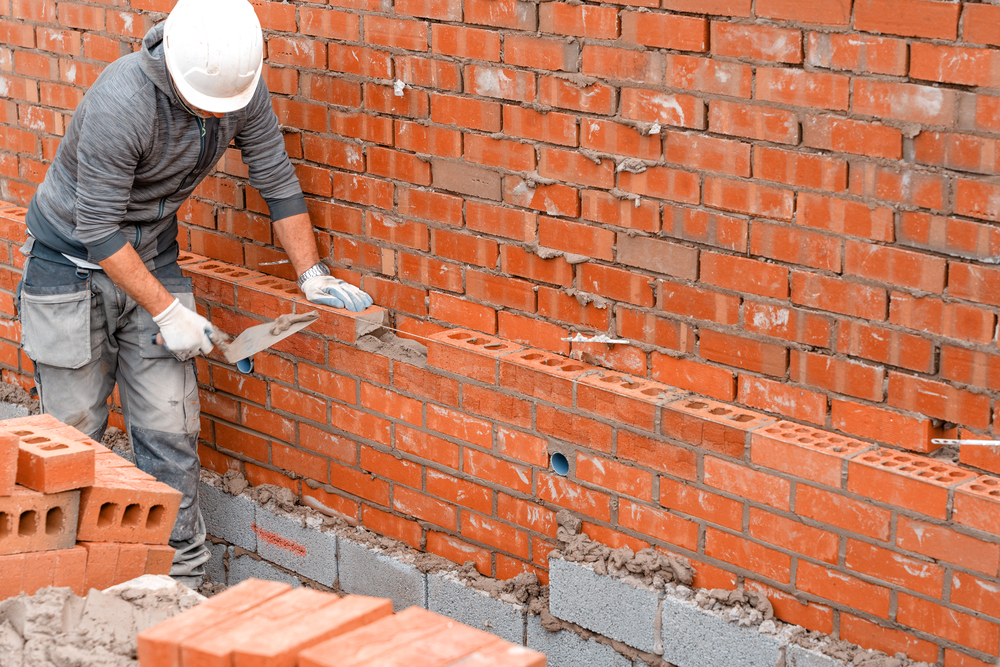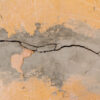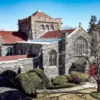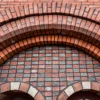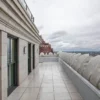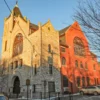Is stucco considered masonry? This question often arises among property owners and historic preservationists. Stucco, a durable and versatile material, plays a significant role in building and restoring properties, particularly in historical contexts. Its compatibility with various architectural styles makes it a sought-after choice for new constructions and restorations. While stucco may not traditionally fall under classic masonry, its application in restoring historic buildings must be considered.
Premier Building Restoration, rooted in the heart of Philadelphia, is a beacon of expertise in historic masonry restoration. Our services are not limited to traditional brick and stone masonry; we extend our craftsmanship to include stucco and EIFS repair, embodying the full spectrum of Masonry Restoration. Our team, equipped with deep knowledge and respect for historical integrity, ensures that each restoration project, whether stucco or classic masonry, is handled with the utmost care and precision. We pride ourselves on blending the old with the new, ensuring that the rich architectural heritage of Philadelphia is preserved.
Overview of Stucco as a Building Material
Stucco is a versatile and widely used building material, especially prominent in Philadelphia’s diverse architecture. It comprises cement, lime, sand, and water, sometimes including fibers or synthetic additives for enhanced durability. Stucco’s application involves layering these materials over a supportive mesh or lath, allowing it to be used on different surfaces and structures. Its flexibility in texture and color makes stucco a popular choice for aesthetic and functional purposes in building design.
Unlike other building materials, stucco stands out for its adaptability. It can be applied smooth or textured, and pigments can be added to achieve various colors, making it suitable for various architectural styles, from historic to modern. Stucco is also known for its durability. Once cured, it forms a hard, dense coating resistant to weather elements, including rain, sun, and wind, which is particularly beneficial in Philadelphia’s varying climate. This durability makes stucco an excellent choice for exterior surfaces, offering long-term building protection.
The insulation properties of stucco contribute to energy efficiency in buildings. It acts as a thermal barrier, helping to keep interiors cool in summer and warm in winter. Additionally, stucco is fire-resistant, adding an extra layer of safety to structures.
Comparing Stucco to Traditional Masonry Materials
While stucco shares some common elements with these materials, such as cement and sand, it differs significantly in its application and properties. Traditional masonry involves laying individual units (bricks, stones, or concrete blocks) and binding them with mortar. This method creates structures known for their strength, stability, and load-bearing capabilities.
On the other hand, Stucco is applied as a coating over surfaces. It is not used for structural purposes but rather as a decorative and protective layer. Stucco’s versatility allows for various textures and colors, which can be tailored to match or complement the existing architectural style. This adaptability makes stucco popular for aesthetic enhancements in new constructions and historic restorations.
In terms of maintenance and durability, stucco and traditional masonry materials are long-lasting but require different care approaches. Masonry may need repointing or replacing damaged units over time, while stucco might require patching or refinishing to address cracks or wear. Stucco can be more prone to moisture-related issues if improperly installed or maintained, necessitating periodic inspections and repairs.
The choice between stucco and traditional masonry materials depends on various factors, including the intended use, desired aesthetic, and maintenance considerations. In Philadelphia, where architectural styles range from historic to contemporary, stucco and masonry have unique places. Stucco offers aesthetic flexibility and protective qualities, making it a valuable option for property owners and preservationists seeking to maintain or enhance their buildings’ appearance and integrity.
Characteristics of Masonry and How Stucco Fits In
The most common materials used in masonry are bricks, stones, and concrete blocks, known for their durability, strength, and load-bearing capabilities. One of the key characteristics of masonry is its resilience; these structures can withstand the test of time, often lasting for centuries with proper maintenance. Masonry also offers excellent fire resistance and soundproofing qualities due to the density and thickness of the materials used.
Stucco, while distinct from traditional masonry, complements it in many ways. Made from cement, sand, and lime, stucco is primarily used as a decorative coating for walls and ceilings. It shares some similarities with masonry materials, particularly in cementitious composition and durability. Stucco provides an additional layer of protection against the elements, enhancing the thermal insulation of a building. This aspect is particularly beneficial in places like Philadelphia, where buildings are exposed to a range of weather conditions.
Another attribute of stucco that aligns it with masonry is its aesthetic versatility. Like masonry, which can be crafted into various patterns and designs, stucco can be textured and colored to complement different architectural styles. This flexibility makes stucco a popular choice for new constructions and historic restorations.
Applications of Stucco in Masonry Work
In Philadelphia, where architectural heritage is rich and diverse, stucco plays an important role in preserving and enhancing the aesthetic appeal of masonry structures. One of the primary applications of stucco in masonry is as a protective coating. It shields the underlying masonry from weathering, moisture intrusion, and environmental damage, extending the structure’s lifespan. This protective layer is particularly crucial in fluctuating climates, where buildings are exposed to various weather conditions.
Additionally, stucco is used to improve the energy efficiency of masonry buildings. By adding an extra layer of insulation, stucco helps maintain a stable indoor temperature, reducing the need for excessive heating or cooling. This aspect is especially beneficial for older buildings that may have yet to be constructed with modern insulation standards.
Stucco also finds its application in the restoration of historic buildings. Its ability to be molded, textured, and colored to match existing structures makes it ideal for repairs and renovations. In historic preservation, maintaining the authenticity and integrity of the structure is paramount, and stucco allows for seamless integration with the original masonry work.
Advantages and Limitations of Stucco in Construction
One of the primary advantages of stucco is its versatility in aesthetics. It can be applied in various textures and colors, making it adaptable to different architectural styles. This flexibility allows it to seamlessly integrate with other construction materials, including traditional masonry, enhancing the overall appearance of buildings. Stucco is also praised for its durability; when applied correctly, it forms a hard, resilient coating that can withstand various weather conditions, a significant benefit in places like Philadelphia with diverse climate patterns.
Another advantage of stucco is its relative ease of application compared to other construction materials. It can be quickly applied over large areas, making it a time-efficient choice for both new constructions and renovations. Additionally, stucco provides an extra layer of insulation, contributing to the energy efficiency of buildings by helping to maintain consistent indoor temperatures.
However, stucco also has its limitations. One of the main concerns is its susceptibility to moisture damage if not properly installed or maintained. Water can penetrate through cracks or poorly sealed joints, leading to issues like mold growth or structural damage. This necessitates meticulous installation and regular maintenance to ensure its longevity. Stucco can also be prone to cracking, particularly in areas with significant temperature fluctuations or seismic activity. These cracks not only affect the aesthetic appeal but can also compromise the protective function of stucco.
Take Action with Premier Building Restoration
Premier Building Restoration is your go-to expert for those seeking exceptional Masonry Restoration and Stucco & EIFS Repair. We offer comprehensive solutions tailored to meet the unique needs of your property, whether it’s a historical landmark or a modern structure requiring specialized care. Trust us to revive the beauty and integrity of your building with our unparalleled expertise in masonry and stucco restoration. Contact us today to bring your vision to life and ensure your property stands the test of time in Philadelphia’s rich architectural tapestry.



